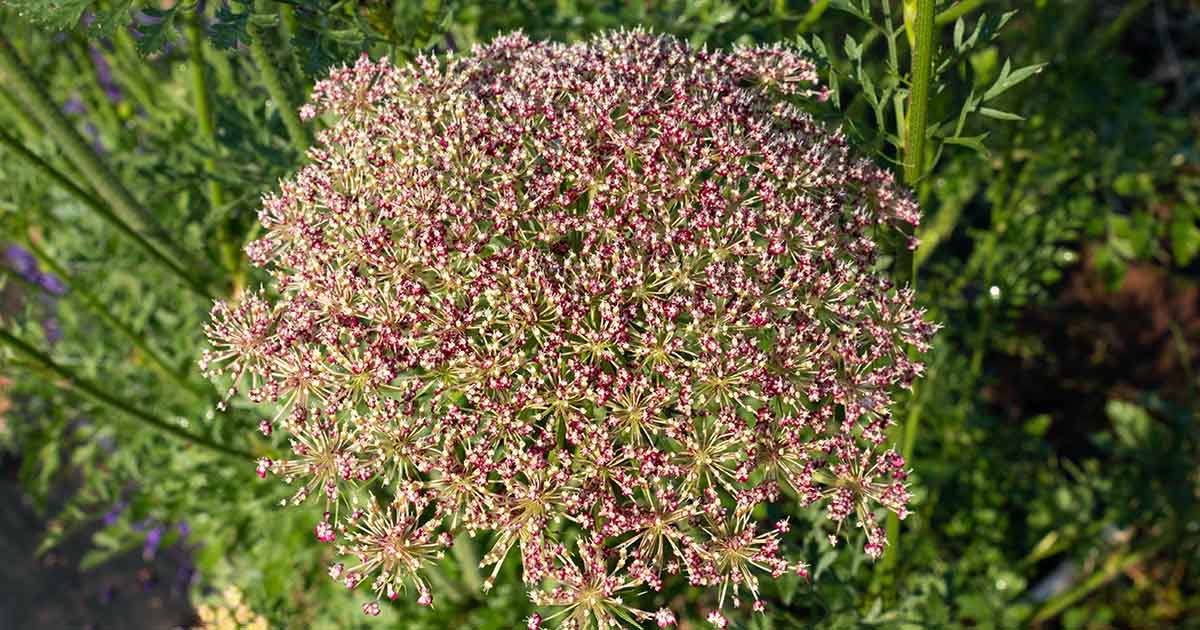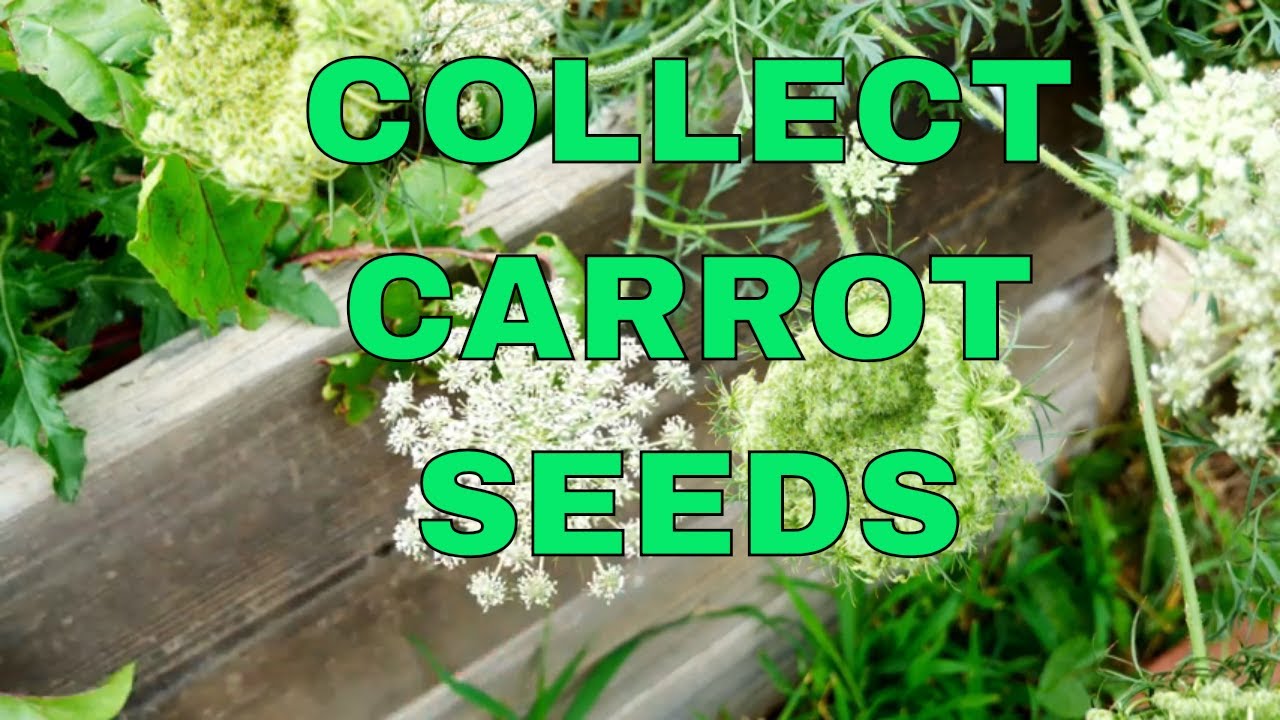To collect carrot seeds, let the flowers mature and dry on the plant, then carefully remove the seeds. Carrot seeds can be collected by allowing the flowers to fully mature and dry while still on the plant.
Once the flowers have dried out, gently gather and remove the seeds. This process ensures that the seeds are ready for storage or planting, and allows you to continue growing carrots in the future. Collecting carrot seeds is a simple and cost-effective way to replenish your seed stock and maintain a sustainable garden.
By following these steps, you can easily harvest carrot seeds and enjoy a never-ending supply of this delicious and nutritious vegetable.

Credit: gardenerspath.com
Seed Collection Basics
The importance of collecting carrot seeds lies in the ability to sustain your gardening efforts and ensure a continuous supply. Understanding the seed collection process allows you to save money and become more self-reliant. To collect carrot seeds:
- Allow the carrot plants to fully mature in the garden, usually taking around two growing seasons.
- Watch for the carrot flowers to appear. Carrots produce umbels of small, white flowers on tall stalks.
- After blooming, the flowers will turn into seed heads.
- Wait until the seed heads turn brown and start to dry out.
- Gently harvest the seed heads and place them in a paper bag or envelope.
- Store the bag or envelope in a cool, dry place for several weeks to allow the seeds to completely dry.
- Once dry, remove the seeds and store them in a labeled envelope or airtight container.
By following these simple steps, you can successfully collect carrot seeds and ensure a bountiful harvest year after year.
How to Collect Carrots Seeds: Step by Step Guide
Selecting The Right Carrot Varieties
When selecting the right carrot varieties for seed collection, there are several factors to consider. First, choose open-pollinated or heirloom varieties as these will produce seeds that will come true to type. Next, consider the specific characteristics you desire in your carrot seeds, such as size, shape, and flavor. Some popular varieties for seed collection include Napoli, Scarlet Nantes, and Chantenay Red Cored.
Another important factor to consider is the growing conditions and climate in your region. Certain carrot varieties may be better suited to colder or warmer climates, so it’s important to choose varieties that will thrive in your specific area. Additionally, take into account the days to maturity of the carrot varieties, as this will determine when you can harvest the seeds.
Lastly, consider your personal preferences and intended use for the carrots. Some varieties are better suited for fresh eating, while others are ideal for juicing or roasting. By carefully selecting carrot varieties that align with your preferences and growing conditions, you can ensure a successful seed collection.
Cultivating Carrots For Seed Production
Preparing the soil is essential for successful carrot seed production. Start by clearing the area of any debris and weeds, and ensure that the soil is well-drained and loose. Carrots prefer sandy loam soil with good fertility. Amend the soil with organic matter, such as compost or well-rotted manure, to improve its texture and nutrient content.
To achieve vigorous carrot growth and high seed yields, it is crucial to optimize growing conditions. Carrots require full sun, so select a location with at least six hours of direct sunlight daily. Adequate spacing between plants, typically 2-4 inches apart, allows for proper airflow and reduces the risk of disease outbreak. Consistent moisture is vital for seed production, so water regularly and deeply.
After planting, monitor the carrots closely to ensure they receive proper care. Regularly check for pests, such as aphids or carrot flies, and take prompt action if detected. Weeds can compete with carrot plants for nutrients and water, so regular weeding is necessary. Apply a balanced fertilizer during the growing season to support plant health and seed production.
Monitoring Carrot Plant Health
One of the key aspects of successful carrot seed collection is monitoring the plant’s health. By keeping a close eye on your carrot plants, you can identify common diseases and pests early on, allowing you to take proactive measures to protect your crop.
Diseases such as carrot rust fly, aster yellows, and black rot can severely impact carrot plants. Regularly inspect the leaves and stems for discoloration or signs of wilting. If you notice any such symptoms, take immediate action to prevent the spread of the disease.
Pests, such as aphids, carrot weevils, and cutworms, can also attack carrot plants. Look for signs of insect damage, such as holes in leaves or irregular feeding patterns. Implementing effective pest control measures, such as using natural predators or organic pesticides, can help minimize damage to your plants.
Overall, regularly monitoring the health of your carrot plants and taking timely action against diseases and pests will greatly increase the chances of a successful carrot seed collection.
Determining Seed Maturity
When collecting carrot seeds, it is important to determine their maturity to ensure optimal seed quality. Recognizing the signs of seed maturity in carrots is crucial for successful seed collection. Here are some indicators to look out for:
1. Carrot Umbels: Check the umbels of the carrot plant to see if they have fully developed. Umbels are the flower clusters on top of the plant where the seeds are formed.
2. Color Change: Pay attention to the color of the umbels. As the seeds mature, they will change from green to brown or tan.
3. Dry and Parched Appearance: Mature carrot seeds will have a dry and parched appearance. They should feel lightweight and have a brittle texture when touched.
4. Seed Dislodgement: Gently rub the umbels between your fingers. If the seeds are ready, they will easily dislodge and fall off.
Once you have determined that the carrot seeds are mature, you can proceed with harvesting them for collection.
1. Cut the Tops: Remove the carrot tops to focus the plant’s energy on seed production.
2. Dig up the Carrots: Carefully dig up the carrot plants, being cautious not to damage the umbels.
3. Dry the Umbels: Hang the carrot umbels in a warm and well-ventilated area. Allow them to dry completely until the seeds easily separate from the umbels.
4. Seed Separation: Rub the dried umbels between your hands to separate the seeds from the chaff.
Remember to store the collected carrot seeds in a cool and dry place for future use.
Carrot Seed Extraction And Cleaning
Collecting carrot seeds requires careful extraction and cleaning. This process ensures the collection of high-quality seeds for future planting.
To collect carrot seeds, first, select mature and healthy carrots from your garden. Choose carrots that are fully grown and have started to flower. Once you have identified the ideal carrots, carefully remove the flowers and allow them to dry. This will aid in the extraction of the seeds.
To extract the seeds, gently rub the dried flowers between your palms or use a mortar and pestle to separate the seeds from the chaff. It is essential to ensure that the seeds are completely dry before moving on to the next step.
To clean and prepare the carrot seeds for storage, separate any remaining chaff from the seeds by winnowing or using a sieve. This will help remove any debris and ensure that only pure seeds are stored. Once cleaned, store the carrot seeds in a cool and dry place in an airtight container to maintain their freshness.
Table:
| Steps | Description |
|---|---|
| 1 | Select mature and healthy carrots |
| 2 | Remove flowers and allow them to dry |
| 3 | Extract seeds by rubbing dried flowers |
| 4 | Clean seeds by winnowing or using a sieve |
| 5 | Store in airtight container in a cool and dry place |
Storing Carrot Seeds Properly
Storing carrot seeds properly is crucial to ensure their long-term viability. Choosing the right storage containers can greatly contribute to maintaining seed quality. When selecting containers for storing carrot seeds, opt for airtight containers that can protect the seeds from moisture and other environmental factors. Glass jars with rubber-sealed lids or plastic containers with tight-fitting lids are suitable options. Additionally, consider adding desiccant packets to absorb any excess moisture within the containers.
This will help prevent seed damage and preserve their viability. It is essential to store the containers in a cool, dry place away from direct sunlight. Ideally, store the seeds in a temperature-controlled environment, such as a refrigerator or a cool basement. By creating optimal storage conditions, you can extend the lifespan of carrot seeds and ensure successful seed germination for future planting endeavors.
Additional Tips For Successful Seed Collection
When collecting carrot seeds, it is important to follow best practices in order to achieve successful seed collection. One common mistake to avoid is harvesting the seeds too early. Carrot seeds need to fully mature on the plant before they are ready for collection. Wait until the seed heads have turned brown and dried out before harvesting.
Another mistake to avoid is collecting seeds from hybrid carrot varieties. Hybrid seeds do not produce plants with the same traits as the parent plant, so it is best to collect seeds from open-pollinated or heirloom carrot varieties. These types of seeds will produce carrots with the same characteristics as the parent plant.
Additionally, it is important to properly store collected carrot seeds. Store them in a cool, dry place in an airtight container to maintain their viability. Label the container with the variety and date of collection for easy reference in the future.
Frequently Asked Questions Of How To Collect Carrots Seeds
Can You Get Carrot Seeds From Carrot Tops?
Yes, you can get carrot seeds from carrot tops. Carrot tops can produce flowers and then seeds, which can be collected for planting.
How Do You Get Carrot Seeds When Carrots Don T Have Seeds?
Carrots do have seeds, which are found in the flowering part of the plant. To get carrot seeds, you need to let the carrot plant flower and produce seeds. The seeds can then be collected and planted to grow new carrots.
How Do You Scatter Carrot Seeds?
Scatter carrot seeds by preparing the soil with compost, removing any weeds, and creating furrows. Place seeds in the furrows about 2 inches apart, cover with soil, and water gently. Keep soil moist until seeds germinate, usually in 10-20 days.
Thin seedlings to 3-4 inches apart as they grow.
Should You Pick Carrots Before They Go To Seed?
It is recommended to harvest carrots before they go to seed. Picking carrots early ensures optimal taste, texture, and tenderness. Letting carrots mature too long can cause them to become woody, bitter, and less flavorful. Harvesting at the right time yields delicious, fresh carrots.
Conclusion
To conclude, collecting carrot seeds can be a rewarding experience for any avid gardener. By following the simple steps outlined in this blog post, you can ensure a successful harvest of carrot seeds for future planting. Remember to choose healthy, mature carrots, allow them to flower and develop seed heads, and properly store the collected seeds.
With a little patience and care, you can grow your own carrots from seed and enjoy the fruits of your labor. Happy gardening!

